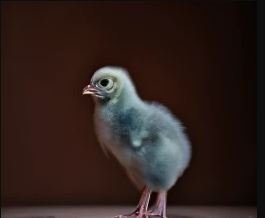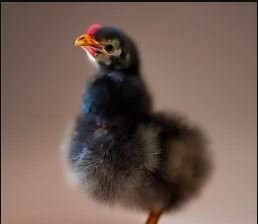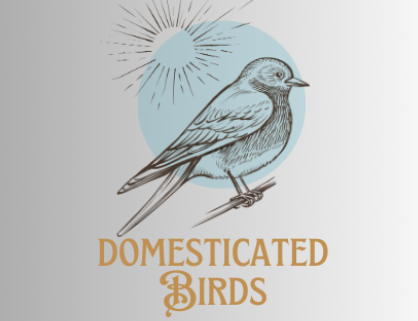Raising Blue Copper Marans Chicks: Know specialty, traits, housing, and environment, changing diet with growth, solving health issues, preparing for egg production, predators, ways of protection, pricing many more things in detail.
Overview of Blue Copper Marans
Blue Copper Marans are a stunning breed of chicken that originated in France. Known for their striking appearance and the unique dark brown eggs they lay; they’ve become a favorite among poultry enthusiasts.
Why Blue Copper Marans Chicks Are Special
So, what makes Blue Copper Marans chicks so special? It’s a combination of their distinctive look, friendly nature, and the potential they have to become top-notch egg layers.
Characteristics of Blue Copper Marans Chicks
Blue Copper Marans Chicks Appearance and Coloration
Blue Copper Marans chicks are easy to recognize due to their distinctive and striking coloration. These chicks boast a mix of blue and copper feathers that create a stunning visual contrast. The blue feathers can range from light, smoky shades to deep, steel blue, while the rich copper feathers typically appear around their necks, known as the hackles, and on their backs.
Blue Copper Marans Chicks Temperament
Blue Copper Marans chicks are renowned for their calm and friendly demeanor. They are typically easy to handle, making them a favorite among both novice and experienced chicken keepers. These chicks are inquisitive and gentle, often displaying a curious nature that makes them enjoyable to watch and interact with.

Raising Blue Copper Marans Chicks
Housing and Environment for Blue Copper Marans Chicks
Suitable Coop Setup for Chicks
Creating a safe and comfortable environment for your Blue Copper Marans chicks is essential. Start with a brooder that provides consistent warmth, protection, and easy access to food and water. A heat lamp or a brooder plate will help maintain the right temperature, especially in the first few weeks.
As your chicks grow, transition them to a spacious, well-ventilated coop. Ensure the coop is predator-proof with secure locks and strong wire mesh. Inside, include nesting boxes for when they start laying eggs and roosting bars for them to perch on at night.
Know Complete nest setup for chicks, while knowing about leghorn chicks.
Environmental Considerations for Optimal Growth
These chicks thrive in clean, dry environments. Keep their living space well-ventilated to prevent respiratory issues and ensure their bedding is always dry and clean to avoid infections. It’s crucial to monitor the temperature closely, especially for younger chicks, as they need consistent warmth to stay healthy.
Around 4-6 weeks of age, Blue Copper Marans chicks can begin foraging outdoors. Providing access to an outdoor space where they can forage and explore will greatly benefit their physical and mental well-being. Outdoor time helps them develop strong muscles and reduces stress, contributing to healthier, happier chickens.
Nutrition Requirements for Blue Copper Marans Chicks
Feeding Schedule and Diet Composition
Begin by providing them with a high-quality chick starter feed that is specifically formulated to meet their nutritional needs. These starter feeds contain essential vitamins, minerals, and protein necessary for their early development.
Offer the feed multiple times a day to ensure they receive adequate nutrition, and always provide access to fresh, clean water.
Food for chickens in summer and winter.
Nutritional Needs at Different Growth Stages
As Blue Copper Marans chicks grow, their nutritional requirements evolve. Around 6-8 weeks of age, transition them to a grower feed, which is designed to support their continued growth and development. Grower feeds typically have slightly lower protein levels than chick starter feeds but still provide the necessary nutrients for healthy development.
As your Blue Copper Marans approach egg-laying age, usually around 18-20 weeks, it’s time to switch to a layer feed. Layer feeds are specially formulated to support egg production, with higher levels of calcium to ensure strong eggshells.

Health Care and Maintenance
Common Health Issues in Blue Copper Marans Chicks
Just like any other living creature, Blue Copper Marans chicks can encounter health issues. These may include:
Coccidiosis
Cause: Caused by the protozoan parasite Eimeria, commonly found in poultry environments.
Symptoms: Diarrhea (sometimes bloody), lethargy, decreased appetite, ruffled feathers.
Prevention: Maintain clean living conditions, provide clean water, and administer preventive medication such as coccidiostats.
Treatment: Administer prescribed anticoccidial medications and supportive care like electrolyte solutions.
Respiratory Infections
Cause: Often caused by bacteria or viruses, transmitted through airborne droplets or contaminated surfaces.
Symptoms: Sneezing, coughing, nasal discharge (clear or cloudy), difficulty breathing.
Prevention: Practice strict biosecurity, consider vaccination, and ensure proper ventilation.
Treatment: Use antibiotics or antiviral medications as prescribed, along with supportive care like warmth and ventilation.
Parasitic Infestations (Mites and Lice)
Cause: Infestation by external parasites like mites or lice, typically spread through contact with infested birds or contaminated bedding.
Symptoms: Feather loss, irritated skin, visible parasites on feathers or skin, restlessness.
Prevention: Regularly inspect birds, keep coops clean, use appropriate parasiticides, and quarantine new birds.
Treatment: Apply recommended parasiticides, clean and disinfect the coop, and provide supportive care like improved nutrition.
Handling and Socialization
Proper Handling Techniques for Chicks
When it comes to handling your adorable Blue Copper Marans chicks, a gentle touch goes a long way! Remember, these little fluffballs are delicate, so be sure to support their bodies with both hands. Avoid squeezing too tightly and make the experience as pleasant as possible for them. Starting handling sessions from a young age helps build trust and reduces stress as they grow.
Socialization Importance for Healthy Development
Think of socialization as essential “chick therapy”! Spending quality time with your Blue Copper Marans chicks each day is crucial for their overall well-being. Let them roam and explore their surroundings, encouraging interaction with both humans and fellow chickens. Socialized chicks tend to grow into confident and friendly adults, making your flock a joy to be around. So, don’t skip out on the cuddles and chats—it’s all part of raising happy and healthy chicks!

Predators and Protection
Common Predators of Blue Copper Marans Chicks
Out in the wild, danger lurks around every corner, especially for our adorable Blue Copper Marans chicks. Crafty raccoons, swooping hawks, and sly foxes see your fluffy companions as quite the tasty treat. But don’t worry—we’ve got some clever tricks up our sleeves to keep them safe and sound!
Helpful Strategies for Predator Protection
Fortify Their Fortress: Give your chick’s coop a makeover! Strengthen their defenses by burying wire mesh below ground to thwart tunneling predators. And don’t forget to secure those windows and doors with sturdy locks to keep out any unwanted guests.
Nighttime Guardians: Shed some light on the situation! Install motion-activated lights or a solar-powered spotlight around the coop to illuminate any nocturnal visitors and send them packing.
Trusty Sidekicks: Every superhero needs a sidekick, right? Introduce a guardian goose or a loyal livestock guardian dog to your flock. These natural protectors will keep a watchful eye on your chicks and scare off any potential threats.
DIY Predator Deterrents: Get your creative juices flowing with some DIY predator deterrents! Hang shiny CD discs around the coop to dazzle and confuse predators or set up scarecrows dressed in old clothes to spook them away.
Nature’s Barrier: Mother Nature knows best! Plant prickly bushes like holly or thorny shrubs around the coop perimeter. These natural barriers not only provide shelter but also act as a formidable defense against ground-dwelling predators.
Preparing for Egg Production
Signs Your Chickens Are Ready to Lay Eggs
Around 18-20 weeks, watch for increased activity around nesting boxes, reddening combs (the fleshy growths on their heads) and wattles (the fleshy growths under their chins), and the “squat” behavior (where they lower their bodies and spread their wings slightly), indicating your Blue Copper Marans are gearing up to lay their first eggs.
Nesting Box Setup and Maintenance
Prepare nesting boxes before your hens start laying. Use clean, dry bedding like straw or wood shavings. Place the boxes in a quiet, dimly lit area of the coop to encourage egg laying. Regularly clean the nesting boxes to maintain hygiene and comfort.
Optimal Diet for Egg-Laying Hens
Once your hens begin laying, provide a high-quality layer feed rich in calcium to support strong eggshells. You can also supplement their diet with crushed oyster shells or eggshells. Ensure they have access to fresh water and occasional treats for variety.
Lighting Requirements for Egg Production
Adequate lighting is essential for consistent egg production. Provide 14-16 hours of light per day to stimulate laying. During the shorter days of winter, consider using artificial lighting to maintain this schedule.
Tips for Raising Healthy Blue Copper Marans Chicks
Proactive Measures for Disease Prevention
Keeping your Blue Copper Marans chick’s healthy starts with prevention. Keep their living space clean, provide fresh water and food daily, and stick to a routine health check regimen. Before adding new members to your flock, quarantine them to prevent the spread of diseases.
Behavioral Enrichment for Chickens
Happy chicks are healthy chicks! Enhance their environment with perches, dust baths, and toys to stimulate their minds and bodies. Encourage natural behaviors like foraging by allowing them to explore their surroundings—it’s like a fun adventure for your feathered friends!
Recognizing Blue Copper Marans Chicks’ Quality
When it comes to quality, look for chicks with vibrant colors, smooth feathers, and a strong build. They should be lively, alert, and free from any signs of sickness or abnormalities. Choosing from reputable breeders ensures you’re getting the cream of the crop!
Evaluating Chick Quality Before Purchase
Before bringing home new additions to your flock, give them a thorough inspection. Check for bright eyes, clean vents, and active behavior—it’s like giving them a mini health exam! And remember, buying from trusted breeders ensures you’re investing in healthy, top-notch chicks for your Blue Copper Marans family.
Pricing and Economic Considerations
Average price of Blue Copper Marans Chicks: The price of Blue Copper Marans chicks varies based on factors like age, quality, and breeder reputation. Generally, you can expect to invest between $5 to $15 per chick. Show-quality or rare-colored birds may fetch higher prices.
Factors Influencing Price: Several factors affect Blue Copper Marans chick prices, such as lineage, availability, and demand. Chicks from well-known bloodlines or with exceptional characteristics often command higher prices due to their desirability.
Economic Viability for Breeders: Breeding Blue Copper Marans can be financially rewarding, especially with a focus on producing high-quality birds. Consider the expenses of feed, housing, and veterinary care in your breeding plans.
After all, selling hatching eggs and mature hens can contribute to your breeding operation’s profitability.
Conclusion
Embarking on the adventure of raising Blue Copper Marans chicks is a delightful endeavor, promising both visual delight and practical perks like delicious eggs. By showering them with attentive care, providing optimal nutrition, and ensuring their safety, you’re not just nurturing cute chicks—you’re cultivating future egg-laying champions! Whether you’re a passionate hobbyist or contemplating becoming a breeder, embracing the distinctive requirements of these chicks guarantees a fulfilling journey and abundant rewards.


вывод. из. запоя. анонимно. ростов. вывод. из. запоя. анонимно. ростов. .
анонимный. вывод. из. запоя. ростов. анонимный. вывод. из. запоя. ростов. .